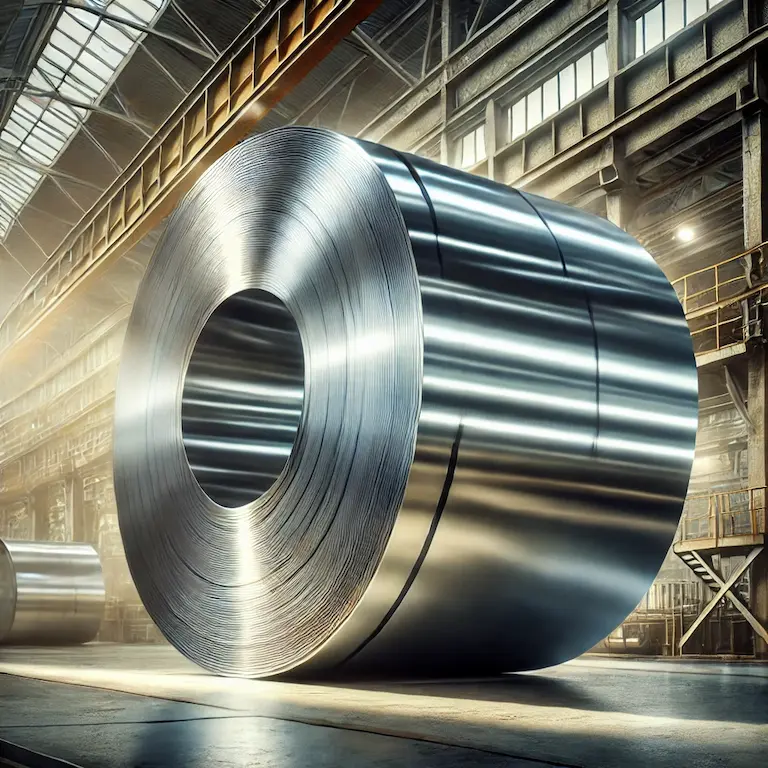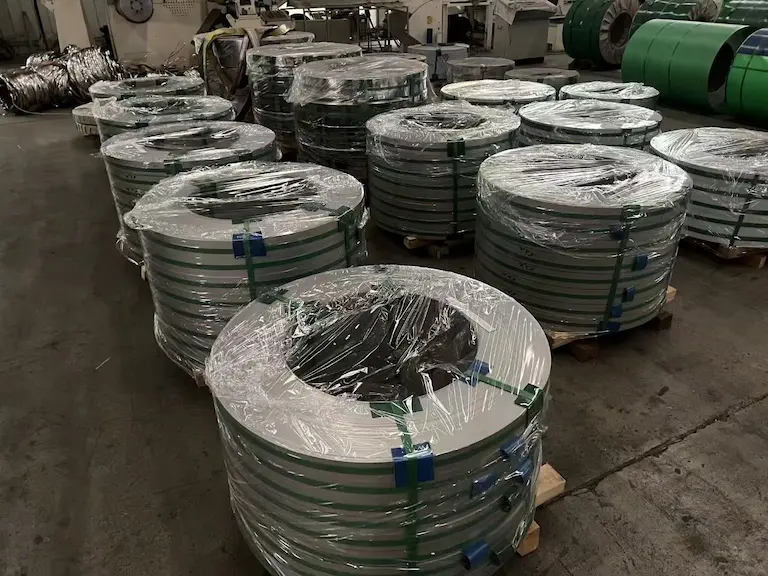What is the AISI 321 Austenitic Stainless Steel?

Ewan Liao

AISI 321 is an austenitic stainless steel alloy renowned for its excellent corrosion resistance and stability against intergranular corrosion, particularly after exposure to high temperatures in the chromium carbide precipitation range of 427–816°C. By adding titanium, AISI 321 enhances its mechanical properties and maintains strength even in elevated temperature environments.
As stated in the German standard DIN EN 10088-1, “Nichtrostender Stahl 1.4541 (AISI 321) weist eine hervorragende Beständigkeit gegen interkristalline Korrosion auf.” This translates to, “Stainless steel 1.4541 (AISI 321) exhibits excellent resistance to intergranular corrosion.” [Source: DIN EN 10088-1, German Institute for Standardization]
In the Chinese GB standard, AISI 321 stainless steel is designated as 06Cr18Ni11Ti.
- 06: Indicates a maximum carbon content of 0.06%.
- Cr18: Approximately 18% chromium content.
- Ni11: Approximately 11% nickel content.
- Ti: Denotes the addition of titanium for stabilization.
Material Testing After You Place An Stainless Steel Foil Order
Hardness Testing
Ingredient detection
Tensile Strength Test
Table of Contents
what is Stabilized Stainless Steel?
As mentioned, AISI 321 stainless steel is also known as stabilized stainless steel. So, what is it? Stabilized stainless steel is a category of steel that contains specific stabilizer elements that other steels don’t have. These elements play a vital role in the stainless steel’s composition,
These elements are the following:
• Titanium
• Niobium
These elements form carbides that are more stable than regular chromium carbides. Stainless steels that contain these elements are called stabilized stainless steels.
Get it now:AISI 302 Stainless Steel
What does AISI Stand For?
The abbreviation AISI stands for the American Iron and Steel Institute, and they have been in the steel industry since 1908. Together with the Society of Automotive Engineering (SAE), the two companies are the reasons why our numbering system for steel was successfully made.
What Is Austenitic Stainless Steel?
Austenitic stainless steels are a category of stainless steel alloys characterized by their face-centered cubic crystal structure. This structure provides exceptional toughness and ductility across a wide temperature range. These steels are highly valued for their superior corrosion resistance, formability, and weldability, making them ideal for various industrial applications.
AISI 321 Stainless Steel Austenitic: Overview

AISI 321 stainless steel is a titanium-stabilized grade that offers excellent resistance to intergranular corrosion. The addition of titanium prevents the formation of chromium carbides during welding or exposure to high temperatures, which can otherwise lead to material degradation. This makes it particularly useful in applications where the material is subjected to temperatures in the sensitization range.
AISI 321 Stainless Steel: Strength
AISI 321 stainless steel exhibits high strength and resistance to scaling at temperatures up to 816°C. Its mechanical properties are comparable to those of AISI 304, but with improved creep and stress rupture properties. This makes it a preferred choice over AISI 304 in high-temperature environments where mechanical strength is crucial.
AISI 321 Stainless Steel: Features
- Corrosion Resistance: Excellent resistance to intergranular corrosion after exposure to temperatures in the chromium carbide precipitation range.
- High Temperature Stability: Maintains mechanical strength and oxidation resistance at elevated temperatures.
- Good Weldability: Can be welded using all standard fusion methods without the risk of intergranular corrosion.
- Comparable to AISI 316: Offers similar corrosion resistance to AISI 316, with added advantages in high-temperature applications.
AISI 321 Stainless Steel: Technical Parameters
- Density: 7.9 g/cm³
- Melting Point: 1400–1425°C
- Modulus of Elasticity: 193 GPa
- Thermal Conductivity: 16.1 W/m·K at 100°C
- Electrical Resistivity: 0.072 x 10^-6 Ω·m at 20°C
AISI 321 Stainless Steel: Applications
- Aircraft Exhaust Manifolds: Due to its ability to withstand high temperatures without losing strength.
- Expansion Joints: Offers flexibility and resistance to thermal fatigue.
- Thermal Oxidizers: Suitable for equipment operating under cyclic heating conditions.
- Furnace Parts: Ideal for components exposed to continuous heat.
- Chemical Processing Equipment: Resistant to organic and inorganic chemicals.
AISI 321 Stainless Steel: Chemical Composition
| Element | Percentage (%) |
| Carbon (C) | ≤ 0.08 |
| Chromium (Cr) | 17.0–19.0 |
| Nickel (Ni) | 9.0–12.0 |
| Titanium (Ti) | ≥ 5 x C% |
| Manganese (Mn) | ≤ 2.0 |
| Silicon (Si) | ≤ 0.75 |
| Phosphorus (P) | ≤ 0.045 |
| Sulfur (S) | ≤ 0.030 |
AISI 321 Stainless Steel: Capacity
The capacity of AISI 321 to maintain its mechanical properties at elevated temperatures makes it invaluable in high-temperature industrial processes. Its resistance to oxidation and scaling ensures longevity and reliability, reducing maintenance costs and downtime.
Equivalent Grades of AISI 321 Stainless Steel
AISI 321 stainless steel is recognized globally, but it is often referred to by different designations depending on the country or standardizing body. Here are some of the equivalent grades:
-
UNS S32100: The Unified Numbering System (UNS) designation for AISI 321.
-
EN 1.4541 / X6CrNiTi18-10: According to the European Standard EN 10088-1, the equivalent grade is 1.4541, also known by its material number X6CrNiTi18-10.
-
SUS 321: In the Japanese Industrial Standards (JIS), the equivalent stainless steel grade is SUS 321.
-
BS 321S31: Under the British Standard (BS), AISI 321 is referred to as 321S31.
-
DIN X6CrNiTi18-10: In the German standard DIN, the equivalent is X6CrNiTi18-10.
-
GOST 08Х18Н10Т (08X18H10T): In the Russian GOST standards, the equivalent grade is 08Х18Н10Т.
These equivalents share similar chemical compositions and mechanical properties with AISI 321, making them suitable substitutes in various applications. However, it’s essential to verify specific requirements like mechanical strength, corrosion resistance, and compliance with regional standards before selecting an equivalent grade for critical applications.
